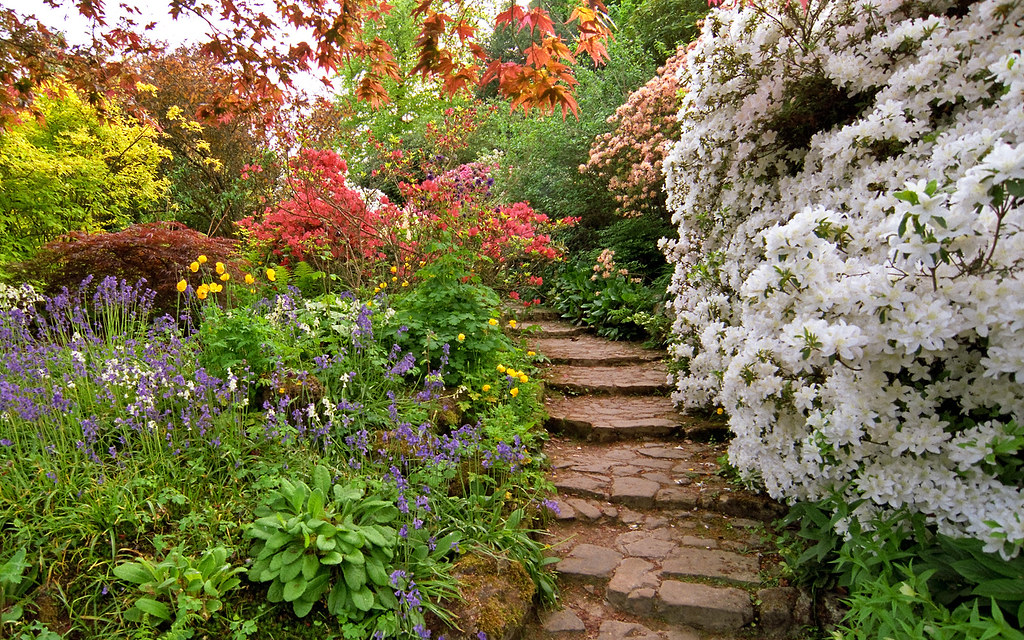 |
| pixabay |
Signs of Life...
 |
| pixabay |
While it may seem like a bit of a harsh metaphor, I’ve received that exact advice in my coaching role. It’s a warning to not exhaust your own resources with some “at the expense of your superstars.” I will admit, I have mixed feelings about Maurer’s advice. While I understand the idea of leveraging time and attention where it’s most impactful and welcome, I don’t think there are many “rocks” in our profession. It worth mentioning, any stroll along a river’s edge or shady forest will also prove that nature finds a way to provide growth even on the roughest rocks.
At the other end of the spectrum is Julie Wilson's description of growing bamboo. In her book, The Human Side of Changing Education: How to Lead Change With Clarity, Conviction, and Courage, she explains:
| maxpixel |
This speaks my language more than the the rocks metaphor. It’s a living model of a growth mindset. There's a difference in belief, purpose, expectation, and understanding. Wilson's book and message is all about effective leadership through compassion and courage, rather than control and compliance, certainly the right environment to cultivate healthy growth.
Beyond the Garden Gates...
| wikipedia commons |
Any search for gardening tips yield list after list of recommendations and “Top 10” tips. The first search hits featured guidelines from Growingagreener world.com, Fine Gardening, and The University of Minnesota Extension. The following topics titles (and quoted passages) are taken straight from their links.
🌱 Test Soil
The University of Minnesota Extension explains that, "Soil is a living ecosystem—a large community of living organisms linked together through nutrient cycles and energy flows."
The better we understand our students and their unique needs, the better we can tend to their growth.
The better we understand our students and their unique needs, the better we can tend to their growth.
🍃 Add Organic Material/Provide Nutrients
Our education nutrients are that mixture of curriculum and instruction that promotes and cultivates growth. Our professional craft mixes and maintains the continued balance of nutrients to promote learning and growth.
🍂 Keep it Covered
A critical component of our job is to create an environment that is safe and encourages new growth. Providing a “protective layer” allows us to conserve the resources that support healthy learning while sheltering from some of the more unwelcome environmental influences.
💧 Apply the Correct Fertilizer
Don’t overfertilize
Just like there will always be new techniques, products, or tools to help tend to our classroom gardens, there’s no such thing as educational Miracle-Gro. Growth rates are unique among every plant and we shouldn’t expect anything otherwise. Applying the correct fertilizer is all about selecting best practices, effective strategies and appropriate resources to support learning and “stimulate growth.”
⥁ Rotate Crops
Experienced gardeners rotate crops to allow species to share resources and nutrients. Placement, grouping and rotation respect and benefit from a diversity of crops and their unique nutrient requirements. The most effective flexible learning environments rely upon similar benefits!
🌞 Don’t crowd plants
Consider flexible learning spaces. Thriving gardens allow room to grow, including the parts of the plant you can see and those that may be hidden beneath the soil. The same goes for our learners!
Soil compaction and disturbance such as tillage can eliminate these important microenvironments. This makes it hard for plant roots to penetrate the soil, absorb water and nutrients, and interact with beneficial microbes.
Disturbing soil also disturbs weed seeds, exposing them to light and increasing germination—in other words, more weeds! (extension.umn.edu)
🐛 Keep an Eye on your Bugs
Use Patience with Pest Control
Enough said...
💦 Water Wisely
Finally, Fine Gardening says it best: Also remember that more isn’t necessarily better when giving your plants a drink.
🐝
Link to Dave Maurer podcast
